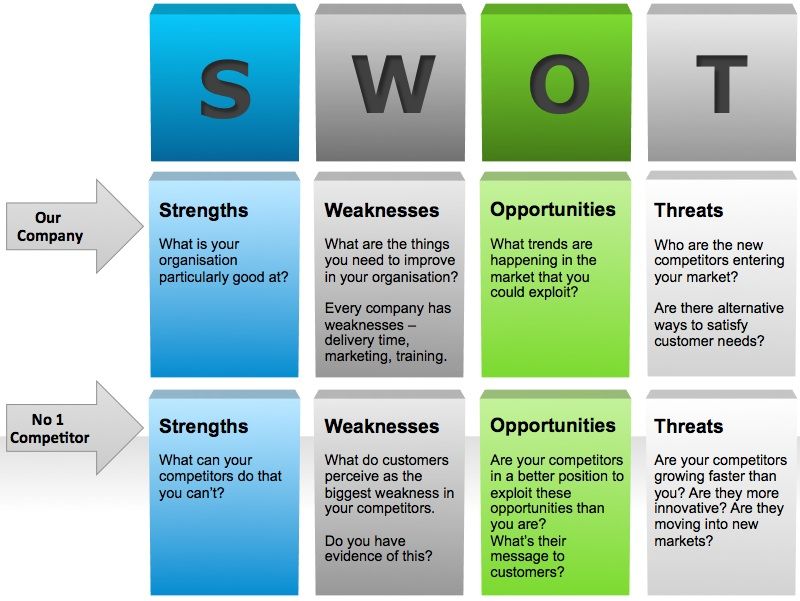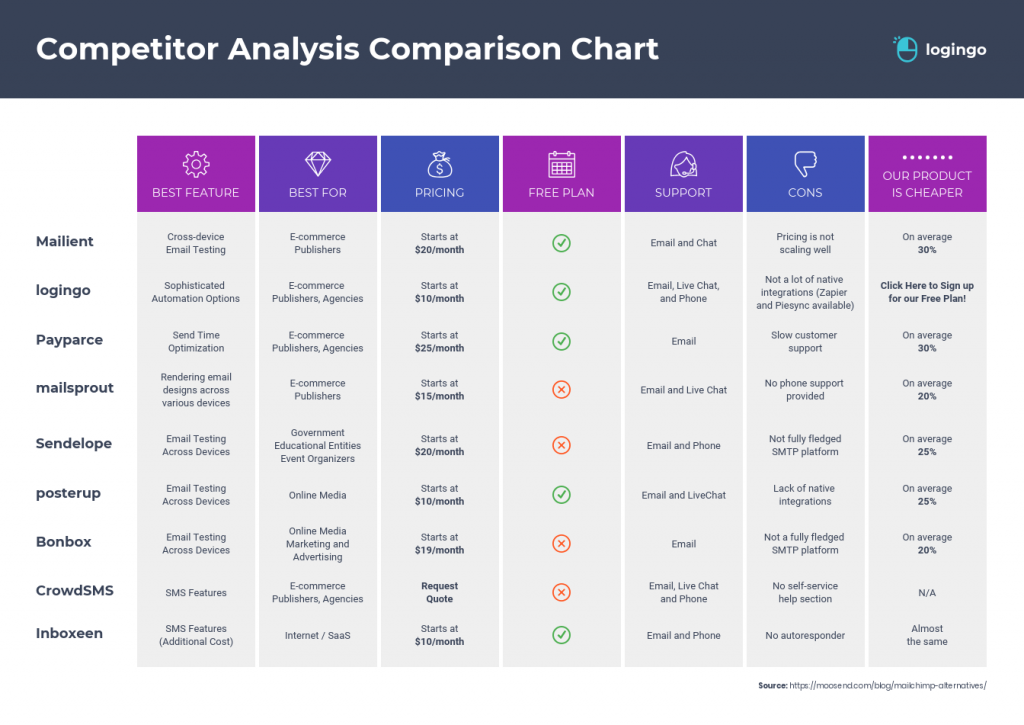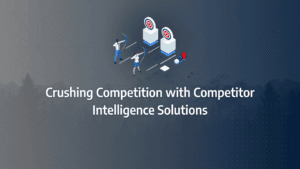Staying ahead of your competitors is not just an option—it’s a necessity. But how do you ensure that your strategies are not only reactive but also proactive? This is where mastering the art of SWOT analysis comes into play. By thoroughly understanding your competitors’ strengths, weaknesses, opportunities, and threats, you can craft strategies that not only defend your market position but also push your business toward new heights.
Imagine being able to anticipate your competitor’s next move or uncovering an untapped market that aligns perfectly with your business’s strengths. These are just a few of the strategic advantages that a well-conducted SWOT analysis can provide. But it’s not just about gathering data—it’s about transforming that data into actionable insights that drive real business success.
In this guide, you’ll learn how to conduct a competitor SWOT analysis that goes beyond the basics. We’ll explore how to turn identified threats into opportunities, leverage your competitors’ weaknesses, and solidify your position in the market. Ready to unlock the strategic insights that will give your business a competitive edge? Let’s dive in.
- A thorough competitor SWOT analysis provides the foundation for strategic planning, helping you anticipate competitors’ moves and react proactively.
- Understanding your competitors’ strengths and weaknesses allows you to identify gaps in the market that your business can exploit.
- SWOT analysis can uncover hidden opportunities that align with your business’s strengths, offering new avenues for growth.
- Effective SWOT analysis transforms threats into opportunities by allowing you to develop contingency plans that mitigate risks.
- Regularly updating your SWOT analysis ensures that your business stays aligned with the dynamic market landscape, maintaining a competitive advantage.
- Applying insights from SWOT analysis in decision-making processes enhances your strategic planning and drives business success.
- Integrating SWOT analysis with other strategic tools, such as PESTLE analysis, can provide a more comprehensive view of your competitive environment.
How do I create an effective competitor SWOT analysis grid?
What is A Competitor SWOT Analysis?
Competitor SWOT analysis is essentially a decision-making tool. It’s a competitor analysis framework developed by consulting firms to provide an overview of the current business situation before crafting corporate strategy. SWOT stands for Strengths, Weaknesses, Opportunities, and Threats. Strengths and Weaknesses refer to internal factors specific to your organisation or project, while Opportunities and Threats are external factors dependent on your environment. Simply put, you create a grid with a box for each of these four elements, fill it with data and information you have available, and gain instant insights into the context of your decision.

Going Beyond the Basic Competitor SWOT Analysis
Taking the extra step of crossing strengths and weaknesses with opportunities and threats creates a new perspective on the competitor. In practice, you may end up with a long list of potential strategies that the competitor could pursue. To help make sense of this mosaic of potential strategies, you can assign scores to each strategy, such as 1 or 0. A score of 1 represents a seemingly strong strategy between a strength/weakness or opportunity/threat while also being within the core capabilities of the competitor. A score of 0 represents a weak strategy and a challenge for the competitor to achieve. Once the strategies are reviewed and vetted, what remains is the competitive advantage the competitor could pursue.
Given that few companies have only one competitor to worry about, performing this analysis on other core competitors is crucial. After completing a SWOT competitor analysis on your core competitors and analysing the collective strategies, you will have a strong understanding of the paths your competitors may take, the opportunities and threats this represents to your business, and possibly identify market conditions attractive to new entrants, which may introduce new threats.
Adapting to Market Changes
For years, market research companies thrived by surveying consumers through panels and call centres. At the time, this was about the only way to gather customer data. The research and analysis were also fairly complex and not conducive to automation. However, with the advent of the internet, software analytics, and artificial intelligence, companies like Qualtrics, InMoment, Medallia, and ConfirmIt have created cloud-based platforms that allow companies to perform DIY research on their own customers. These new entrants have posed substantial threats to incumbent market research firms. The incumbent firms are now scrambling to find new footing as their long-time, familiar market changes around them.
Making Competitor SWOT Analysis More Actionable
Taking the extra step of crossing strengths and weaknesses with opportunities and threats makes the results of the competitor SWOT analysis more actionable. Stopping at the typical quadrant chart doesn’t leave you with specific, actionable situations you can pursue or defend against. Consider the example of digital advertising. If you only had the four quadrants of SWOT and didn’t cross them to generate the possible strategies your competitors could take, would that analysis be as actionable? Seeing the possible strategies your competitors may take gives you concrete insights from which you can build your own competitive strategy.
What Matters Most?
From our experience, the most effective competitor analysis strategy is rooted in finding overlooked customer pain points that your competitors fail to address. Clients often discover that their competitors excel in operational strengths but miss the mark on nuanced customer needs. It is typically far more impactful to position your offering in terms of clarity and simplicity, especially where competitors overinvest in features that create unnecessary complexity. Furthermore, from our observations, industry leaders use the opportunity created by competitor inefficiencies, especially where the customer experience is neglected, to reinforce their value proposition, turning competitor strengths into liabilities.Get In Touch
How can a SWOT analysis inform my SEO content strategy?
How Could I Use This for My SEO Strategy?
Deciding on an SEO strategy for your business can be complex. You need to determine which keywords to target, what type of content to produce, where to publish it, and much more. Before making these decisions, a competitor SWOT analysis can help identify your focus areas for SEO. It will also highlight some quick wins, so you don’t waste your efforts.
Let’s start with the type of content you want to produce. Begin by completing the matrix with the types of content that are your strengths and weaknesses in terms of SEO. For example, your videos might be ranking well, but your blog posts might be struggling in search results. Next, identify areas that could serve as opportunities, and the types of content that represent significant threats from competitors. This process will inform your decisions on which type of content to produce next as part of your SEO strategy.
Using Competitor SWOT Analysis to Identify Keywords
A SWOT matrix can also help you identify keywords for your business. By inputting the keywords you’re already ranking well for in the Strengths field, and those you’re struggling with in the Weaknesses field, you’ll get an overview of your current position. In the Opportunities field, identify keywords with good search volume but relatively low competition that are unique to your competitors’ domains. These are potential keyword options for your business in the future. For Threats, define keywords unique to your domain that could present opportunities for your competitors in the future, posing challenges to your ranking for these keywords.
This method provides a map of four different sets of keywords, each with its own liabilities, costs, and strategic value to your company. When selecting keywords to rank for in your content, a competitor SWOT analysis matrix specifically designed for keywords can help you make informed and sensible choices tailored to your company.
Competitor SWOT Analysis for Structured Research
A competitor SWOT analysis can help you collect your research in a structured and visual way, making it easy to present to others. It enables you to make decisions specific to your company’s standing and particular business environment. When developing your SEO strategy, it helps you pinpoint areas that will be useful and provide a return on investment (ROI) for your business, from identifying keywords to deciding where to publish your content. It’s a straightforward but highly valuable tool for developing an SEO strategy for your business.
When to Conduct a Competitor SWOT Analysis
Addressing Business Stagnation
If your business feels stuck in a rut, a competitor SWOT analysis can provide the insights needed to regain momentum. Perhaps you’re not generating enough new leads, your conversion rates are low, or your pricing strategy isn’t competitive. By performing a competitor SWOT analysis, you can identify these issues and develop a plan to address them effectively.
Entering a New Market
Planning to enter a new market requires thorough homework. Conducting a SWOT competitor analysis of your main competitors will give you a good indication of your likelihood of success and the best approach to take. Understanding your competitor’s strengths and weaknesses allows you to develop a plan to exploit their weaknesses and gain a competitive edge from the outset. Additionally, you can anticipate any potential threats they might pose to your business.

Launching a New Product
When launching a new product, it’s crucial to understand how your competitor’s products compare. What features do customers value most? What price points are they willing to accept? A competitor SWOT analysis can help answer these questions, giving you a clear picture of the market landscape. This understanding enables you to position your product appropriately, ensuring it appeals to your target audience.
Our Tactical Recommendations
We often see that capitalising on competitor messaging inconsistencies is a quick win for B2B marketers. From our experience, focusing on these inconsistencies can rapidly build trust by providing clear and transparent alternatives. Clients also typically benefit from creating lead generation assets that compare their offerings directly with competitor solutions, helping prospects understand key differentiators at a glance. Lastly, we’ve found that exploiting weak spots in competitor ecosystems, like inadequate partnerships or integrations, often allows for highly targeted marketing campaigns that resonate with niche segments underserved by the competition.Get In Touch
What steps should I take to conduct a marketing SWOT analysis?
1. Strengths – Highlighting Your Company’s Advantages
Marketing strengths are the qualities that make your organisation stand out to your target audience. To uncover these strengths, compare your products and services with those of your competitors to find your unique advantages. These strengths, which can be both tangible and intangible, contribute to your unique selling proposition (USP).
Examples of strengths might include innovative products, a strong market reputation, or a strategic location. It’s essential to leverage these strengths effectively. Identify which strengths resonate most with your prospects and integrate these insights into your future marketing strategies.
Utilise strengths to:
- Improve click-through rates (CTR) in paid advertising
- Boost conversions on your website
- Create compelling blog content that guides customers through the sales funnel
- Enhance various marketing methods
For instance, reviews from independent rating agencies can serve as credible sources of customer trust. If your business consistently receives outstanding reviews for exceptional customer service, this is a significant strength, particularly if your competitors can’t claim the same. Emphasise this strength in your promotional efforts to address specific customer needs.
2. Weaknesses – Identifying Areas for Improvement
Weaknesses are internal factors that hinder your ability to reach marketing goals. A comprehensive evaluation of your current marketing strategy can reveal these areas. It’s important to address these weaknesses since they are within your control. For example, a marketing strategy without a clear USP is a significant weakness.
Identifying weaknesses is crucial for addressing potential gaps in your business. For instance, if a company aims to increase brand awareness through blogger outreach but lacks skilled personnel, it may struggle to position itself effectively. To overcome this weakness, the company might consider hiring an in-house marketer or outsourcing to a digital marketing agency.
3. Opportunities – Seizing Potential Advantages
Opportunities are external factors that can help your business grow. These can arise when competitors stumble, new markets emerge, or trends shift in your favour. While these opportunities are external, they can greatly influence your marketing strategy. Decision-makers need to be vigilant and ready to seize any potential opportunities to increase brand exposure.
Many small businesses have successfully leveraged social trends to enhance their brand exposure. For example, during the royal wedding of Prince Harry and Meghan Markle, several small businesses created customised products and marketed them across various platforms. Similarly, festive seasons, holidays, and emerging markets offer significant opportunities to boost brand visibility (e.g., in e-commerce).
Opportunities don’t always present themselves in saturated marketplaces. Businesses must remain alert to capitalise on opportunities before their competitors do. An effective marketing strategy involves exploring all potential opportunities and markets your business can enter and dominate. Staying abreast of market and social trends can also be advantageous.

4. Threats – Mitigating Potential Risks
Threats are external factors that could hinder your marketing goals. Challenges stemming from adverse trends pose potential risks to your business’s marketing objectives. Identifying threats requires recognising vulnerabilities that competitors might exploit. For small businesses, threats might include supplier pricing, changing consumer trends, government regulations, and economic downturns.
While competition is a constant threat, other factors must also be considered. For example, if lowering price levels is seen as an opportunity for your business, it becomes a threat if competitors can do the same. Similarly, if your USP is exceptional customer service, increased sales might overwhelm your service team, leading to poor customer experiences. The primary goal of identifying threats is to address and mitigate these issues before they adversely impact the business.





